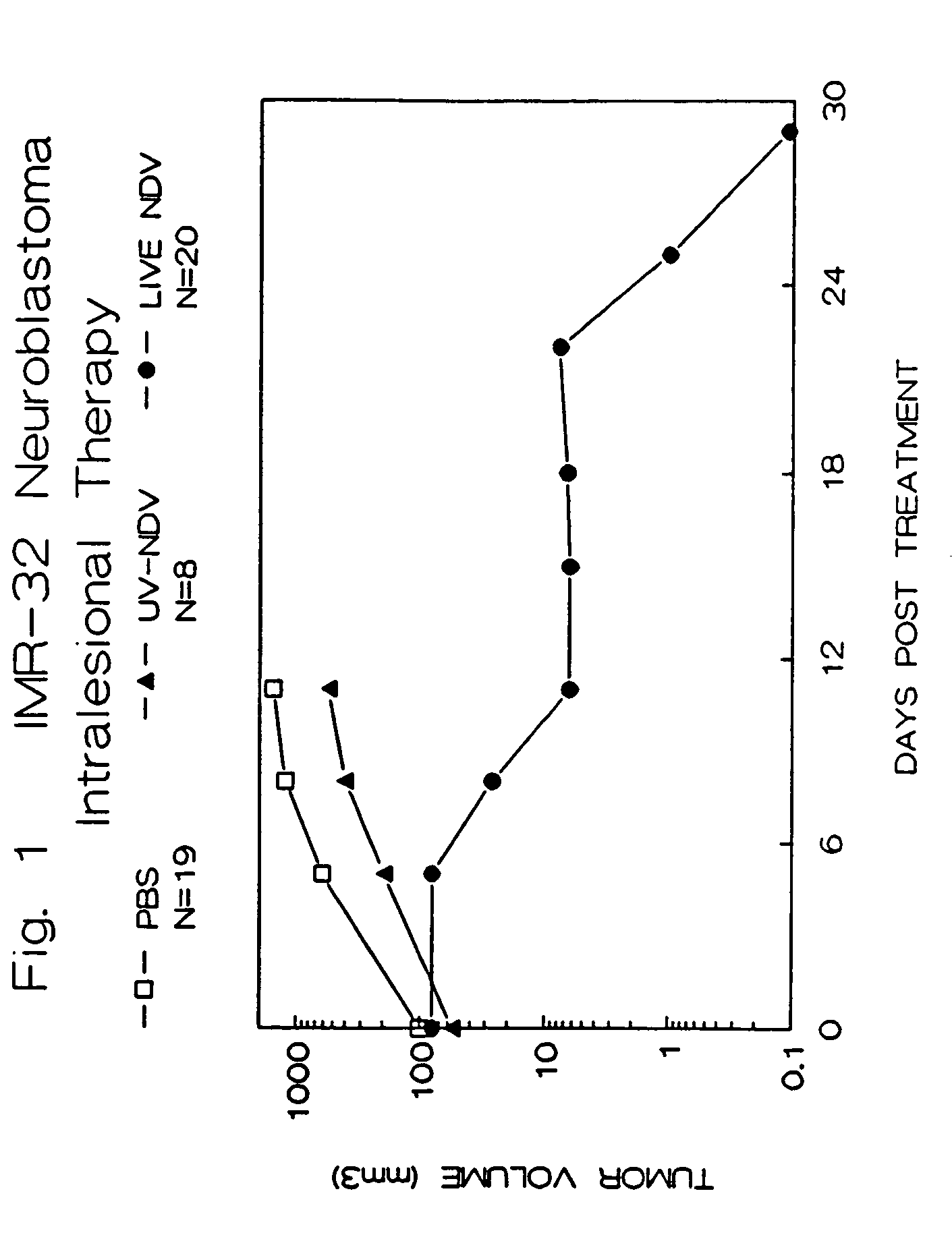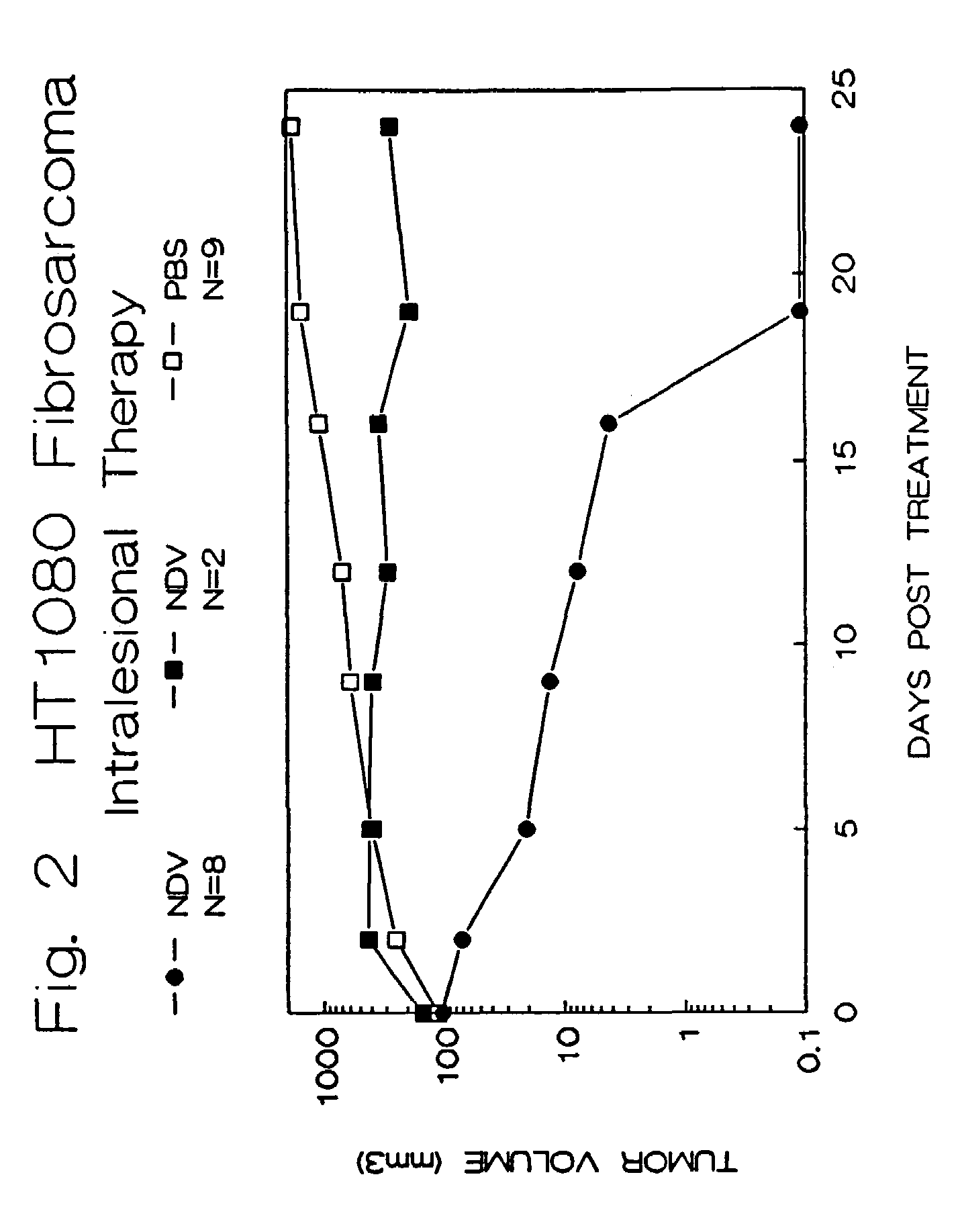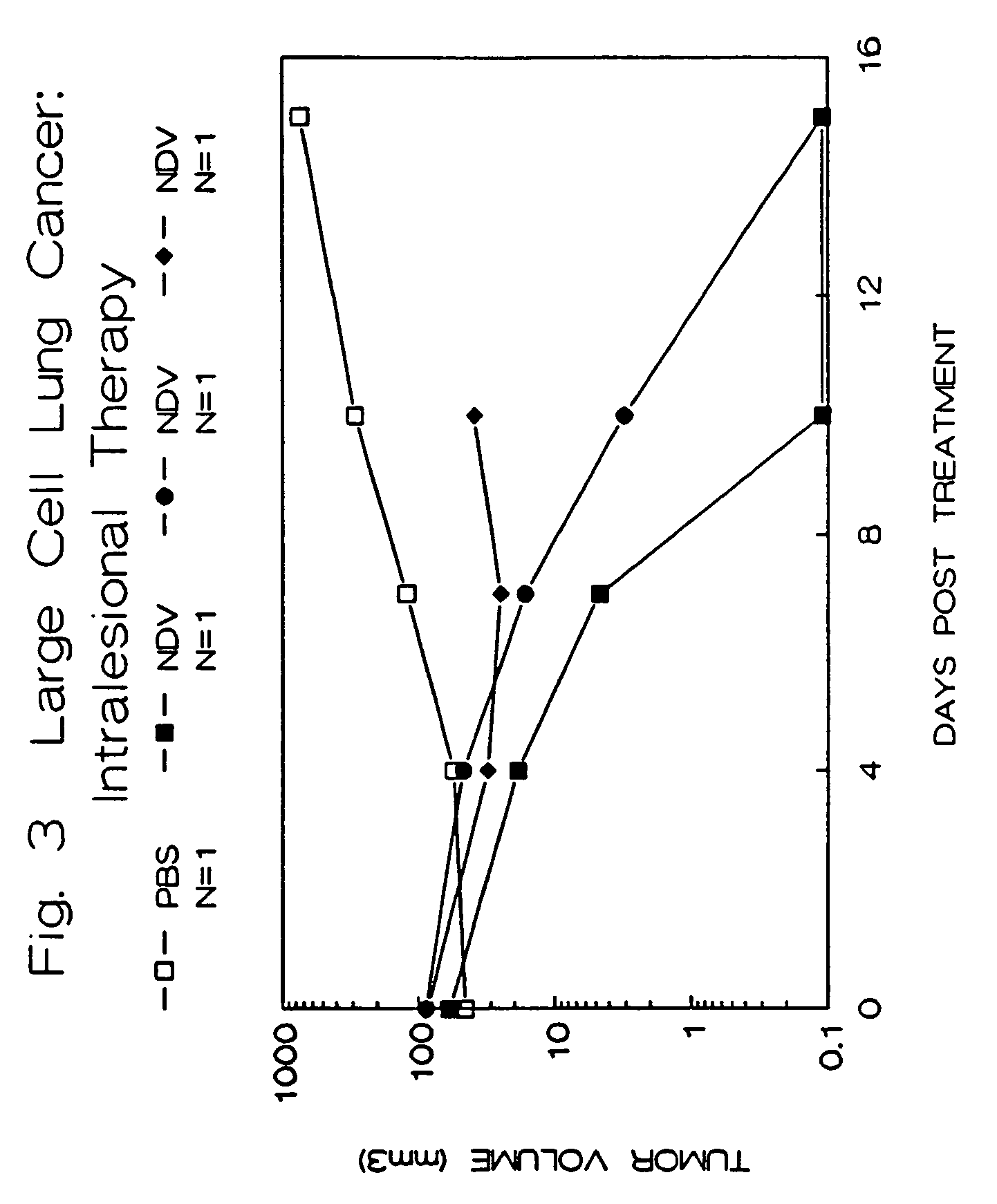Methods of treating and detecting cancer using viruses
a virus and cancer technology, applied in the field of mammals' methods of treating and detecting cancer, can solve the problems of not carrying out work to address direct tumor cytotoxicity of the virus, and not fully exploring the mechanism of any anti-cancer
- Summary
- Abstract
- Description
- Claims
- Application Information
AI Technical Summary
Benefits of technology
Problems solved by technology
Method used
Image
Examples
example # 1
Example #1
Treatment of Human Tumors in Athymic Mice with Intralesional NDV
[0072]Female athymic Balb-c mice were obtained from Life Sciences, Incorporated, St. Petersburg, Fla. and Charles River Laboratories, Wilmington, Mass. They were housed in an isolated room in sterilized, filtered cages and given autoclaved-sterilized chow and water ad libitum. The care of these animals and the experimental protocols were conducted according to guidelines established by the Institutional Animal Care Committees, Cook County Hospital and Rush-Presbyterian-St. Luke's Medical Center, Chicago, Ill. Mice were obtained at approximately four weeks of age, and allowed to acclimate to their new environment for one week.
[0073]Tumor cell lines were obtained frozen from the American Type Culture Collection, Rockville, Md., and were derived from human tumors. The cell lines were maintained in Opti-MEM (Gibco-BRL, Grand Island, N.Y.) containing 2.4 g / L sodium bicarbonate, 10% heat-inactivated fetal calf serum...
example # 2
Example #2
Treatment of Human Tumors in Athymic Mice Using Systemic NDV Therapy
[0086]Athymic mice were injected with human tumor xenografts as described in Example #1. When tumors greater than 6 mm in diameter were achieved, the animals were divided into three groups. The NDV was prepared (see Example #1) in concentrations of 1×108 PFU / 0.3 ml or 1×109 PFU / 0.3 ml of saline. The control solution was an equal volume of saline alone.
[0087]The abdomens of the animals were washed thoroughly with alcohol, and the NDV was injected intraperitonealy using a 25 gauge needle. One set of experimental mice (N=3) received a single injection of NDV at the higher dose (109 PFU), while the other set of 4 mice received injections of 108 PFU three times per week. Control animals received injections of saline. The animals were then observed and the tumor sizes were followed as described for Example #1.
[0088]The results are summarized in FIG. 4. Six out of 7 animals treated with intraperitoneal live NDV e...
example # 3
Example #3
Treatment of Human Tumors in Athymic Mice Using Attenuated Strains of NDV
[0090]NDV strain 73-T was obtained and prepared as described in Example #1. NDV strain M (Mass-MK107) is a strain less virulent than 73-T and was obtained from Dr. Mark Peeples, Rush-Presbyterian-St. Luke's Medical Center, Chicago, Ill. Strain M was replicated in a similar manner to that described in Example #1 for NDV strain 73-T.
[0091]Athymic animals were injected with human HT1080 tumor cells subcutaneously as described above. They were allowed to develop tumors of at least 6.5 mm in diameter at which time they were randomly divided into three groups, and their tumor sizes were recorded.
[0092]The animals from one group were injected with 1.0×108 PFU of NDV strain 73-T in 0.1 ml saline intralesionally, as was described in Example #1. The second group was injected with 1.0×108 PFU of NDV strain M in 0.1 ml saline intralesionally. The last group was injected with 0.1 ml of saline alone. The animals we...
PUM
| Property | Measurement | Unit |
|---|---|---|
| Diameter | aaaaa | aaaaa |
| Mass | aaaaa | aaaaa |
| Cytotoxicity | aaaaa | aaaaa |
Abstract
Description
Claims
Application Information
 Login to View More
Login to View More - R&D
- Intellectual Property
- Life Sciences
- Materials
- Tech Scout
- Unparalleled Data Quality
- Higher Quality Content
- 60% Fewer Hallucinations
Browse by: Latest US Patents, China's latest patents, Technical Efficacy Thesaurus, Application Domain, Technology Topic, Popular Technical Reports.
© 2025 PatSnap. All rights reserved.Legal|Privacy policy|Modern Slavery Act Transparency Statement|Sitemap|About US| Contact US: help@patsnap.com



